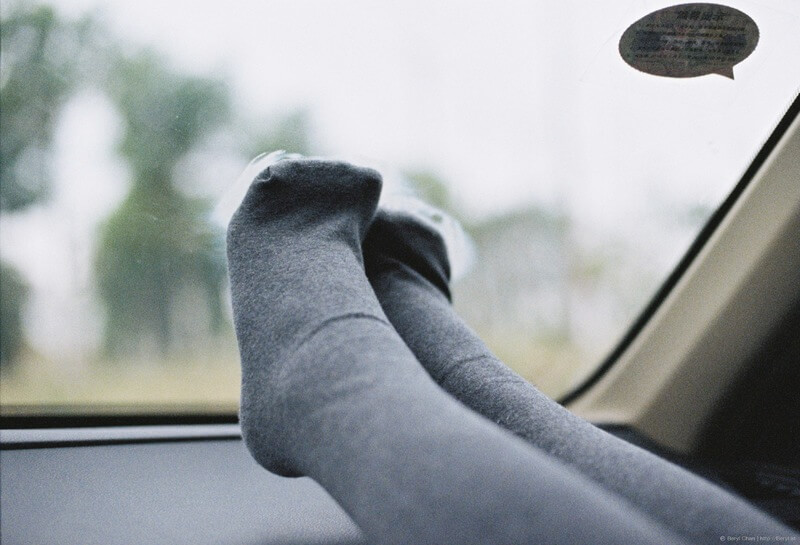Why Is Cotton a Bad Choice for Hiking?

There’s a saying amongst keen hikers that cotton kills. I was a bit confused by this one when I first started doing long distance hikes. I’d never really given much thought to the material my clothes were made of before, but I quickly came to realize that what your clothes are made of is one of the most vital things to consider before setting out on your adventure.
They say cotton kills because wearing it can be one of the fastest ways to end up with hypothermia on a hike. Sceptical? I don’t blame you. On the face of it cotton seems like a great, soft, natural choice, but don’t be fooled! Read on for an explanation of exactly why cotton is never a good idea.
Insulation, Insulation, Insulation
When you’re out in cold conditions during the winter or at any time of year at a high altitude, insulation is what will keep your body temperature where it’s meant to be. Clothes, in general, keep us warm because they trap warm air next to our skin, hence why we bother to wear them! When cotton is dry it does an okay job of keeping you insulated.
However, once cotton gets wet all the air pockets in the material fill with water. Think of it like a sponge. It absorbs moisture at an alarming rate, capable of absorbing up to 7% of its weight in water. Of course, that makes the material heavier, which is never good, but it can also have more serious effects than that.
When you’re hiking you’ll generally sweat quite a lot, and that gets absorbed by cotton clothing. You’re then essentially wearing a wet sponge against your skin. If the air outside is cooler than your body temperature, which is to be expected during the winter months, then you’ll start to feel chilled. In fact, you’d be warmer with no clothes on at all by the time you get to this stage.
Coldness can lead to you becoming disorientated and hypothermia can set in, which can be fatal if not treated. It doesn’t have to be freezing outside for you to get hypothermia, just colder than your body temperature.
Will it help if I wear layers?
Layers are a great idea normally, but multiple layers of cotton will make no difference, as it will still all become saturated. However, if you do have the right clothes, then layers are the way forward.
Wick it Away
You’ll probably have heard of ‘wicking’ fabrics before, but you might not be sure exactly how they work. If something is labeled as wicking, it essentially means that it draws moisture away from your body.
These fabrics are made of special polyester, which only absorbs 0.4% of water, far less than cotton. They have a large surface area which takes moisture away from your body and spreads it out on the outside of the garment, from where it can evaporate.
These materials are still waterproof because of tiny pores that will let water vapor out but won’t let raindrops in. That’s also what’s meant by breathable fabrics. That’s ideal both in hot weather when you want to remain cool and dry, and cold weather, when you want to remain warm and dry.
A Natural Alternative
If you don’t want to go down the polyester route, then merino wool is a natural material that’s far superior to cotton, even though it doesn’t have the wicking qualities. Wool does absorb a fair amount of water but that doesn’t stop it doing its job of insulating. Merino wool is also super lightweight, doesn’t smell too bad at the end of a long day’s hike, and dries out surprisingly quickly. So if you have Merino wool hiking socks you can actually wash them in a natural spring & wear them again in a few hours!
Look Out For…
There are lots of other materials that are just cotton dressed up as something else, including flannel and denim. Steer clear of those! You’ll also want to stay away from materials made from cellulose, which provide no insulation when wet. These include modal, rayon and viscose.
I’m normally always a fan of products made from sustainable bamboo, but be careful as these products are normally largely made of rayon. To round off, be wary of silk, which is lightweight but very absorbent and won’t insulate you at all when wet.
The last thing I want to do is scare you, but it’s important not to take your long hike lightly. If you’re going out into the wilderness you need to have the very best equipment on your side. That way, you can push all worries aside, and just enjoy the view!
Sources:
http://kayakcritic.net/what-to-wear-hiking-steer-clear-of-clothes-made-of-cotton/
https://www.olorun-sports.com/blogs/news/49166979-wicking-fabric